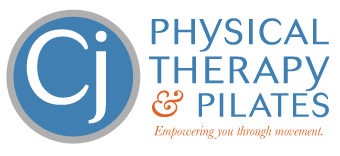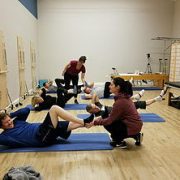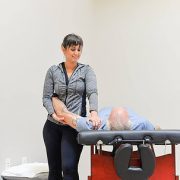If you’ve ever had an injury or dealt with chronic pain, you probably followed a pretty traditional course of action to address it. You went to your primary care doctor and they sent you to the lab for x rays, prescribed medication, or both. You may have gotten a referral to a specialist or even a surgeon. You went to that appointment and were either told that you needed surgery or that you needed to modify your physical activity and avoid certain activities in order to not exacerbate the problem. Basically, you were thrust into the assembly line that has become modern healthcare.
But did you know that you could bypass all of this hassle – and get faster results – by going directly to a physical therapist?
Physical therapists are trained to diagnose your problem and provide a fully customized treatment option that doesn’t involve prescription medications or procedures. In almost all states (including NH) you don’t even need a prescription to see a physical therapist.
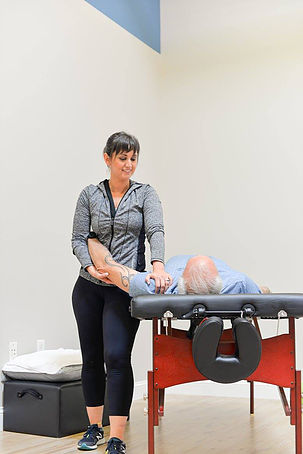
“Don’t I Need an MRI?”
There’s a huge misconception out there that if you are experiencing pain and/or limited mobility, you have to get an MRI to “see” what the problem is. MRI’s have become routine for people dealing with back problems. But what if you could have your injury diagnosed without paying for that uncomfortable imaging process? Better yet, what if the person assessing and diagnosing your injury was the same person who would treat it? If you see a physical therapist BEFORE getting an MRI, chances are you’ll have all the answers you wanted and a step by step plan of how you can get back to an active, pain-free lifestyle without undergoing the physical trauma of surgery. Plus, physical therapists are trained to know when you need to see a doctor. Research has proven time and time again that what shows up in the MRI does not correlate with what is causing your pain. More often than not, the reason for your pain has to do with some type of movement dysfunction (which won’t show up on an MRI). Physical therapists are the industry EXPERTS in movement dysfunction and can resolve 80-90% of all musculoskeletal problems – without any special tests or visits to a specialist medical doctor.
“How do I know that Physical Therapy will even work?”
Physical therapy DOES work. But what doesn’t always work is the model of delivery.
Let me explain.
Because of all the limitations insurance companies have placed on reimbursement over the years, most traditional physical therapy clinics (those that take insurance) have been forced to see more patients than they would like at any one time – just so they can pay the bills and keep the lights on! Additionally, insurance companies have essentially taken over your care. They decide who you can see, what type of treatment you will get, and how many visits you are allowed to get. These decisions are being made by someone who’s never even spoken to you, met you, or actually looked at you to see what’s going on and what might be the best course of action for you. Because of this, “physical therapy” has gotten a bad reputation and a lot of people find that it’s a waste of time, or that it consists of just a bunch of exercises. It’s not the physical therapist’s fault, it’s simply the effect of the modern health care industry that cares more about their bottom line than they do your experience and results. I’ve never met a “bad” physical therapist – only “bad” set-ups and circumstances.
If you don’t want to be prescribed medication, you don’t want to deal with procedures like injections or surgery, you don’t want to waste your money on an MRI, and you don’t want to go to traditional physical therapy and feel like you are wasting your time because you are ignored or are doing the same exercises over and over – then the answer is to go outside of your insurance and pay out of pocket.
This is know as going “out of network”.
“Wait… What… You want me to pay for my physical therapy????”
Yep.
When it comes to musculoskeletal problems, more and more people are actually choosing to take their health into their own hands by paying for it themselves. The assumption is that something like physical therapy is super expensive, because most of the time, when your insurance doesn’t pay for something it IS expensive. Instead, people spend their money on massage therapy, acupuncture, chiropractic care, and personal trainers – all in an effort to avoid doctor’s offices and take care of the problem on their own. They never even consider paying for something like physical therapy. But if you go to a specialist physical therapist who is completely out of network, you can actually save yourself money, and more importantly – time.
Here’s why:
Physical therapists who don’t contract with insurance companies are able to spend more time with you (most spend an entire hour with just you) and create a truly customized plan of care. For example, when I work with clients, I often see them once per week for about 6 sessions, and then we start seeing each other less often. Many times, a client will spend a good 6-8 months with me, but it will consist of only 10-12 in-person sessions and the rest of the time we are checking in over email to make sure everything is going the way it should be. In most insurance-based physical therapy clinics, you blow through 12 sessions in as little as 4-6 weeks. It usually takes longer than 6-weeks to fix a chronic problem that has been nagging at you for several months. That 6 weeks of treatment might get you feeling better, but it’s usually not enough time to make sure that problem won’t come back. That’s the point, isn’t it? While it may seem cheaper in the short-term to do it this way, it ends up costing you a lot more in the long run, especially when that problem comes back. You feel disheartened, and resort to more expensive lines of treatment that you never really wanted – like surgery or injections. If you do your investment right the first time around, you can save yourself a lot of future headaches as well as out of pocket costs.
My clients love that we spread the care out according to how they need it. I also coordinate care with their other providers (like personal trainers and chiropractors). Since I don’t have to spend my time arguing with insurance companies over whether or not they are going to let you keep seeing me, I can spend my time on you instead. And the best part – many times our sessions can actually be paid for by your insurance company (you submit your own claims), a flexible spending account, or a health saving account! But even for those those that don’t want to bother with that, they tell me that it is so much more valuable – and worth every penny – to have a relationship like this with their physical therapist versus one that is controlled by their insurance company. The biggest thing I hear: “Why didn’t I come to you first”.
If you are curious about whether or not this model of physical therapy is right for you just give me a call! It’s not for everyone, but more and more people are finding that it is. If you are local to Portsmouth, NH you can come to our office and talk to one of our specialists for FREE – just to make sure that going out of network for specialist physical therapy care is the right decision for you. If you aren’t local, I have contacts to so many other therapists who work just like me all over the country. Your health is worth at least a conversation, right? Find us on Facebook or get in touch via our website with any questions. We’d love to hear from you!
